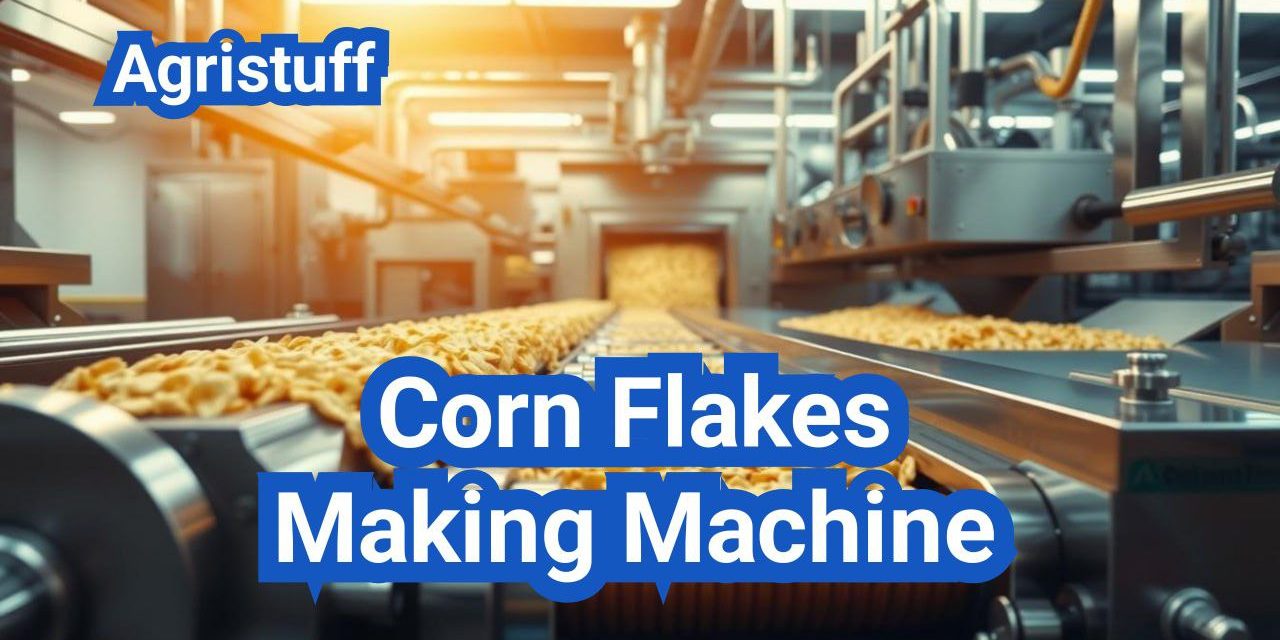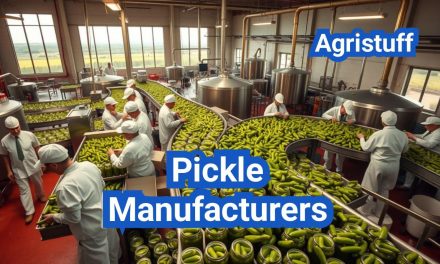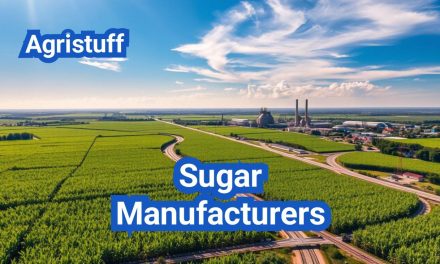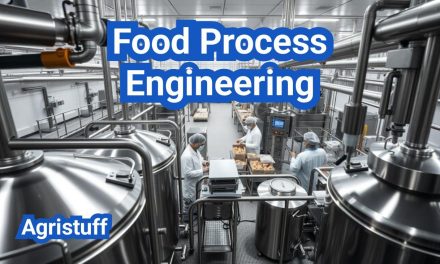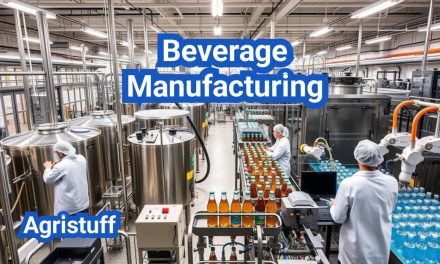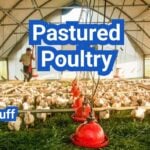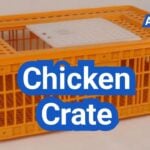The production of breakfast cereals, particularly corn flakes, involves a complex process that requires specialized equipment. The corn flakes making machine is designed to handle various stages of production, from cleaning and milling to cooking, flaking, toasting, and packaging.
A critical aspect of this process is the flaking mill specifications, which directly impact the quality of the final product. Understanding the specifications and processes involved in corn flakes production line is essential for manufacturers to produce high-quality breakfast cereals.
Key Takeaways
- Understanding the corn flakes making machine and its role in breakfast cereal production.
- The importance of flaking mill specifications in determining product quality.
- Overview of the corn flakes production line and its various stages.
- The significance of breakfast cereal processing equipment in modern manufacturing.
- Key considerations for manufacturers when selecting a corn flakes making machine.
The Evolution of Commercial Corn Flakes Production
From humble beginnings to highly automated processes, commercial corn flakes production has evolved substantially. The industry’s transformation is a testament to technological advancements and the quest for efficiency and consistency in cereal manufacturing.
From Manual Processing to Automated Manufacturing
The early days of corn flakes production were labor-intensive and relied heavily on manual processing. Workers had to handle every step, from cooking and conditioning to flaking and toasting. However, with the advent of automation, the industry saw a significant shift. Automated manufacturing not only increased production capacity but also improved product consistency and reduced labor costs.
Modern corn flakes manufacturing machines are equipped with sophisticated control systems that monitor and adjust parameters in real-time. This level of automation ensures that the production process is optimized for quality and efficiency. For instance, automated systems can precisely control cooking temperatures, flaking roll gaps, and toasting times, resulting in a more consistent product.
Key Technological Advancements in Cereal Production
Several key technological advancements have driven the evolution of commercial corn flakes production. One significant development is the introduction of extrusion technology, which allows for the production of a variety of cereal shapes and textures. Additionally, advancements in flaking mill technology have improved the quality and consistency of corn flakes.
Another crucial aspect is the development of fluidized bed toasting technology, which provides uniform toasting and enhances the product’s texture and flavor. These technological advancements have not only improved the quality of corn flakes but have also increased production efficiency and reduced costs.
The integration of these technologies into commercial corn flakes production lines has transformed the industry. Manufacturers can now produce high-quality corn flakes on a large scale, meeting the demands of a global market. As technology continues to evolve, we can expect further improvements in cereal production, driving innovation and efficiency in the industry.
Corn Flakes Making Machine: Core Components and Functions

Understanding the core components of a corn flakes making machine is essential for optimizing production. The machine’s efficiency and the quality of the final product depend on the harmonious functioning of its various parts.
Raw Material Handling and Preparation Systems
The production process begins with the handling and preparation of raw materials. The raw material handling system is designed to efficiently manage the intake, storage, and processing of corn grits, sugar, and other ingredients. This system ensures that the raw materials are cleaned, sifted, and prepared for cooking.
Cooking and Conditioning Equipment
Cooking and conditioning are critical steps in the production of corn flakes. The cooking equipment, typically a rotary cooker or a continuous cooker, is responsible for gelatinizing the starches in the corn grits, making them more palatable and easier to flake. The conditioning process involves adjusting the moisture content and temperature of the cooked grits to achieve the optimal consistency for flaking.
Flaking Mills and Forming Technology
The flaking mills are where the cooked and conditioned corn grits are rolled into flakes. The design and operation of the flaking rolls are crucial for producing flakes of uniform thickness and texture. The forming technology may also include cutters or other devices to shape the flakes into the desired form.
Toasting and Drying Systems
After flaking, the corn flakes are toasted to enhance their flavor and texture. The toasting and drying systems use hot air or other heating methods to toast the flakes to the desired level of crispiness. These systems are designed to ensure even toasting and to prevent overcooking or burning.
The integration of these core components—raw material handling, cooking and conditioning, flaking, and toasting—determines the overall efficiency and quality of the corn flakes production process. By understanding and optimizing each component, manufacturers can produce high-quality corn flakes that meet consumer expectations.
Complete Corn Flakes Production Line Architecture
The architecture of a corn flakes production line is critical for optimizing production efficiency and product quality. A well-designed production line integrates various components, including raw material handling, cooking, flaking, toasting, and packaging systems.
Layout and Space Requirements
The layout of a corn flakes production line must be carefully planned to ensure efficient material flow and minimize production bottlenecks. Factors such as available space, equipment dimensions, and operator safety need to be considered.
- Optimize floor space to accommodate equipment and facilitate easy maintenance access.
- Ensure clear pathways for material transport and operator movement.
- Consider future expansion needs when designing the initial layout.
Material Flow Optimization
Efficient material flow is crucial for maintaining production continuity and reducing waste. This involves designing a logical sequence of operations and ensuring smooth transitions between different stages of production.
- Implement a continuous production flow to minimize downtime and reduce handling losses.
- Use gravity-fed systems where possible to simplify material transport.
- Minimize manual handling to reduce labor costs and improve product safety.
Utility Connections and Requirements
A corn flakes production line requires various utilities, including electricity, steam, water, and compressed air. Ensuring reliable utility connections is essential for maintaining consistent production.
Key utility considerations include:
- Electric power supply capacity and stability.
- Steam generation and distribution systems.
- Water quality and treatment systems.
- Compressed air supply for pneumatic systems.
Production Capacity Considerations
Determining the appropriate production capacity is vital for meeting market demand without overinvesting in equipment. Manufacturers should analyze market trends, production costs, and scalability when deciding on production capacity.
“The key to successful corn flakes production lies in striking a balance between production capacity and market demand, ensuring that the production line is neither underutilized nor overwhelmed.”
By carefully considering these factors, manufacturers can design a corn flakes production line that is efficient, scalable, and capable of producing high-quality products.
Rotary Cereal Cooker Specifications That Impact Quality

The quality of corn flakes is significantly affected by the rotary cereal cooker’s technical specifications, including live steam injection and temperature control. These cookers play a vital role in the production process, ensuring that the cereal is cooked uniformly and to the right consistency.
Live Steam Injection Systems
Live steam injection is a critical feature in rotary cereal cookers, allowing for precise control over the cooking process. This system enables the introduction of steam directly into the cooker, facilitating uniform heating and preventing overheating.
Benefits of Live Steam Injection:
- Uniform cooking
- Precise temperature control
- Reduced risk of overheating
Temperature and Pressure Control Mechanisms
Temperature and pressure control are crucial in a rotary cereal cooker. Advanced mechanisms allow for real-time monitoring and adjustments, ensuring that the cooking process remains within optimal parameters.
Key aspects include:
- High-precision temperature control
- Pressure monitoring systems
- Automated adjustment capabilities
Residence Time and Throughput Capacity
The residence time and throughput capacity of a rotary cereal cooker determine its efficiency and productivity. Optimizing these parameters is essential for meeting production demands without compromising product quality.
| Specification | Description | Impact on Production |
|---|---|---|
| Residence Time | The duration cereal spends in the cooker | Affects cooking uniformity and product quality |
| Throughput Capacity | The amount of cereal processed per hour | Influences production efficiency and output |
Material Construction for Food Safety
Material construction is vital for ensuring food safety and compliance with regulations such as FSMA. Rotary cereal cookers must be constructed from materials that are durable, easy to clean, and resistant to corrosion.
Flaking Mill Technology: Critical Parameters
Flaking mill technology is essential for producing high-quality corn flakes, with several critical parameters to consider. The flaking process is where the cooked and tempered corn grits are rolled into flakes, and the quality of this process directly affects the final product’s texture, appearance, and taste.
Roller Design, Materials, and Surface Treatments
The design of the rollers in a flaking mill is crucial for achieving uniform flaking. The rollers are typically made from high-quality steel or other durable materials that can withstand the rigors of continuous operation. Surface treatments, such as hardening or coating, may be applied to enhance wear resistance and improve the flaking performance.
Key considerations for roller design include:
- Diameter and length to accommodate production capacity
- Surface finish to ensure even flaking
- Material selection for durability and food safety
Gap Adjustment Precision and Control
The gap between the rollers determines the thickness of the corn flakes. Precise control over this gap is critical for achieving consistent flake thickness. Modern flaking mills often incorporate advanced gap adjustment mechanisms, allowing for fine-tuning and maintaining the desired flake thickness.
The importance of gap adjustment precision can be seen in:
- Consistency of flake thickness
- Reduced waste due to over- or under-flaking
- Improved product quality and customer satisfaction
Drive Systems and Power Requirements
The drive system of a flaking mill is responsible for rotating the rollers at the required speed. The power requirements depend on the production capacity and the specific design of the mill. Efficient drive systems help in reducing energy consumption and operational costs.
| Production Capacity | Power Requirement | Drive System Type |
|---|---|---|
| Low | 10-20 kW | Single Motor |
| Medium | 20-50 kW | Dual Motor |
| High | 50-100 kW | Multi-Motor or Gearbox |
Maintenance Access and Serviceability
Easy maintenance access is vital for minimizing downtime and ensuring the longevity of the flaking mill. Features such as quick-release mechanisms, accessible roller bearings, and clean design facilitate routine maintenance and repairs.
Best practices for maintenance include:
- Regular inspection of rollers and bearings
- Lubrication schedules for moving parts
- Training for maintenance personnel
Fluidized Bed Cereal Toaster Engineering Specifications

Fluidized bed technology has revolutionized the toasting process in cereal production, offering precision and consistency. The engineering specifications of fluidized bed cereal toasters are crucial for achieving high-quality products.
Airflow Distribution and Control Systems
The airflow distribution system is a critical component of fluidized bed cereal toasters. It ensures that hot air is evenly distributed throughout the toasting chamber, providing uniform toasting. Proper airflow control is essential for preventing hotspots and undercooked areas.
The design of the airflow distribution system includes features such as:
- Perforated plates or nozzles to direct airflow
- Adjustable dampers for controlling airflow rates
- Advanced fans or blowers for generating the required airflow
Temperature Uniformity and Regulation
Temperature uniformity is vital in fluidized bed cereal toasters to ensure consistent toasting. Advanced temperature control systems are used to regulate the temperature within the toasting chamber.
| Temperature Range | Uniformity Tolerance | Control Precision |
|---|---|---|
| 150°C – 250°C | ±5°C | ±1°C |
Energy Efficiency Features
Energy efficiency is a key consideration in the design of fluidized bed cereal toasters. Features such as insulated toasting chambers and heat recovery systems help minimize energy consumption.
Some toasters also incorporate advanced technologies like:
- Modulating burners for precise heat control
- Variable frequency drives for optimizing fan operation
Product Bed Depth and Residence Time Control
Controlling the product bed depth and residence time is essential for achieving the desired level of toasting. Adjustable weirs or gates are used to control the bed depth, while variable speed conveyors regulate the residence time.
The engineering specifications of fluidized bed cereal toasters play a crucial role in determining the quality of the final product. By optimizing airflow distribution, temperature uniformity, energy efficiency, and product bed depth control, manufacturers can produce high-quality corn flakes that meet consumer expectations.
Cereal Coating and Drying System Requirements

Cereal coating and drying systems play a crucial role in enhancing the flavor and texture of corn flakes. These systems are designed to apply coatings evenly and dry the cereal to the perfect crispiness, making them indispensable in modern cereal production.
Spray Application Technology and Coverage
The effectiveness of cereal coating largely depends on the spray application technology used. Modern systems utilize advanced nozzles and spray patterns to ensure uniform coverage. Precision in spray application is critical to achieve consistent flavor distribution across all cereal pieces.
Factors influencing spray application include nozzle design, spray pressure, and the viscosity of the coating solution. Manufacturers often experiment with different configurations to optimize these factors for their specific production needs.
Solution Preparation and Delivery Systems
The preparation and delivery of the coating solution are vital for maintaining consistency in the final product. Solution preparation systems must be capable of handling various ingredients and producing a uniform mixture.
- Batch mixing tanks for preparing coating solutions
- Pumps and piping for delivering the solution to the spray nozzles
- Agitation systems to prevent sedimentation
Drying Methods and Energy Consumption
Drying is a critical step that follows coating. The choice of drying method significantly affects the cereal’s texture and the overall energy consumption of the production line. Common drying methods include convection drying and fluidized bed drying.
Energy efficiency is a key consideration in the selection of drying systems. Modern drying technologies aim to minimize energy consumption while maintaining or improving product quality.
Quality Control Instrumentation
To ensure the coated and dried cereal meets the required standards, quality control instrumentation is employed. This includes sensors for monitoring moisture levels, coating uniformity, and other critical parameters.
Real-time monitoring allows for immediate adjustments to be made in the production process, reducing waste and improving overall efficiency.
In conclusion, the cereal coating and drying system requirements are multifaceted, involving advanced technologies for spray application, solution preparation, drying, and quality control. By understanding and optimizing these components, manufacturers can significantly enhance the quality and consistency of their corn flakes products.
VFFS Packaging Technology for Corn Flakes
VFFS packaging machines have revolutionized the corn flakes industry by offering efficient and precise packaging solutions. The Vertical Form Fill Seal technology is particularly suited for corn flakes due to its ability to handle the product gently, maintain freshness, and provide an attractive packaging format.
Multi-head Weighing Accuracy Specifications
One of the critical components of VFFS packaging for corn flakes is the multi-head weighing system. This technology ensures high accuracy in filling the packages. The specifications for multi-head weighing include:
- High precision load cells for accurate weight measurement
- Advanced computer algorithms to optimize the weighing process
- Quick adjustment capabilities for different product weights
A leading manufacturer notes, “Our multi-head weighers are designed to provide exceptional accuracy and speed, minimizing waste and maximizing productivity.”
“The key to successful VFFS packaging lies in the precision of the weighing system. It’s not just about filling bags; it’s about ensuring every package meets the exact weight requirements.”
| Feature | Description | Benefit |
|---|---|---|
| High Precision Load Cells | Accurate weight measurement | Reduced product giveaway |
| Advanced Algorithms | Optimized weighing process | Increased speed and accuracy |
Film Handling and Sealing Parameters
The VFFS packaging process also relies heavily on the film handling and sealing parameters. The film used must be suitable for the product and the packaging machinery. Key considerations include:
- Film material compatibility with corn flakes
- Sealing temperature and pressure control
- Easy film changeover systems
Efficient film handling is crucial for maintaining production speed and minimizing downtime. Modern VFFS machines are designed with user-friendly film changeover systems, reducing the time and effort required for adjustments.
Production Speed and Changeover Features
Production speed is a vital factor in the competitiveness of corn flakes manufacturing. VFFS packaging machines are designed to operate at high speeds while maintaining accuracy and product integrity. Changeover features that allow for quick adjustments between different packaging formats and sizes are also essential.
Quick changeover capabilities enable manufacturers to respond rapidly to changes in demand or packaging requirements, enhancing flexibility and reducing potential losses.
Integration with Secondary Packaging Systems
The integration of VFFS packaging machines with secondary packaging systems is another important aspect. This includes case packing, carton sealing, and palletizing systems. Seamless integration ensures a smooth production flow from packaging to dispatch.
A well-integrated packaging line can significantly improve overall efficiency and reduce labor costs. “By integrating our VFFS packaging machines with secondary packaging systems, we’ve seen a notable increase in our production efficiency and a reduction in packaging errors.”
PLC Automation Systems for Cereal Production Lines

PLC automation is at the heart of contemporary cereal manufacturing, ensuring streamlined processes and consistent quality. The use of Programmable Logic Controllers (PLCs) has transformed the cereal production landscape by providing a robust and flexible control system.
Control Architecture and Integration
The control architecture of a PLC automation system is designed to integrate various components of the cereal production line. This includes:
- Central Control Unit: The brain of the operation, where all production data is processed and commands are issued.
- I/O Modules: Input/output modules that connect the control unit to various sensors and actuators on the production line.
- Communication Networks: Ethernet or other industrial networks that enable data exchange between different parts of the system.
HMI Design and Operator Interface
The Human-Machine Interface (HMI) is a critical component of PLC automation, providing operators with a user-friendly interface to monitor and control the production process. Key features include:
- Intuitive Navigation: Easy-to-use menus and screens that allow operators to quickly access necessary information.
- Real-time Monitoring: Live data display of production metrics, such as throughput, temperature, and moisture levels.
- Alarm Systems: Immediate notifications of any deviations from set parameters, ensuring prompt corrective action.
Data Collection and Production Analytics
PLC automation systems enable comprehensive data collection and analysis, which is crucial for optimizing cereal production. This includes:
- Production Metrics: Detailed records of production rates, yield, and energy consumption.
- Quality Control Data: Continuous monitoring of product quality parameters, such as texture and flavor.
- Trend Analysis: Historical data analysis to identify trends and areas for improvement.
Remote Monitoring and Troubleshooting Capabilities
Modern PLC automation systems often include remote monitoring and troubleshooting capabilities, allowing manufacturers to:
- Access Production Data Remotely: View production metrics and system status from anywhere.
- Receive Alerts and Notifications: Get notified of issues or downtime via email or mobile apps.
- Perform Remote Diagnostics: Troubleshoot issues without being physically present on the production floor.
Extruded vs. Traditional Corn Flakes: Process and Equipment Differences

The production of corn flakes has evolved over the years, with two distinct methods emerging: extrusion and traditional processing. Understanding the differences between these methods is crucial for manufacturers to choose the right equipment and process for their production needs.
Extrusion Technology Specifications
Extrusion technology involves cooking and shaping the corn flakes in a single process. This method uses high temperature and pressure to cook the corn, resulting in a product with a specific texture and flavor.
The extruder is a critical piece of equipment in this process, with specifications such as screw design, temperature control, and pressure management playing a crucial role in determining the final product quality.
Product Characteristic Comparisons
The product characteristics of extruded corn flakes and traditional corn flakes differ significantly. Extruded corn flakes tend to have a more uniform texture and a longer shelf life due to the cooking process.
Traditional corn flakes, on the other hand, have a more varied texture and may require additional processing steps to achieve the desired crispiness.
Equipment Requirements for Each Method
The equipment required for extrusion and traditional corn flaking differs significantly. Extrusion requires a specialized extruder, while traditional processing involves a series of equipment including cookers, rollers, and toasting ovens.
The choice of equipment depends on the production capacity, product characteristics, and manufacturing costs.
Cost and Efficiency Analysis
A cost and efficiency analysis is crucial in determining the viability of each production method. Extrusion technology is often more energy-efficient and requires less labor compared to traditional processing.
However, the cost of the extruder and maintenance can be higher, and the flexibility to produce different products may be limited.
Corn Flakes Making Machine Price Factors in the USA
Understanding the factors that influence corn flakes making machine prices is crucial for businesses looking to invest in cereal production. The cost of these machines can vary widely based on several key elements.
Capital Investment for Different Production Scales
The initial capital investment for corn flakes making machines depends significantly on the production scale. Larger production capacities require more substantial investments in equipment, infrastructure, and technology.
- Small-scale production: $50,000 – $200,000
- Medium-scale production: $200,000 – $500,000
- Large-scale production: $500,000 – $1,000,000+
Operating Cost Considerations
Operating costs are another critical factor affecting the overall cost of corn flakes production. These include energy consumption, raw material costs, labor expenses, and maintenance costs.
“Reducing energy consumption and optimizing raw material usage are key strategies for minimizing operating costs in cereal production.”
ROI Analysis and Payback Period
Conducting an ROI analysis helps businesses understand the potential return on investment for their corn flakes making machine. The payback period varies based on production volume, pricing, and market demand.
Financing and Leasing Options
For many businesses, financing or leasing corn flakes making machines is a viable option. This approach can help manage initial capital outlays and provide flexibility in managing cash flow.
- Equipment financing
- Leasing options
- Government grants and incentives for food processing industries
By carefully evaluating these factors, businesses can make informed decisions about investing in corn flakes making machines that meet their production needs and budget constraints.
Small and Mini Corn Flakes Making Machines for Startups

For startups in the breakfast cereal industry, small and mini corn flakes making machines offer an accessible entry point into commercial production. These compact machines are designed to provide the flexibility and efficiency needed for small-scale production without compromising on quality.
Technical Specifications and Capacity Ranges
Small corn flakes making machines typically have production capacities ranging from 50 kg/h to 200 kg/h. The technical specifications often include:
- Compact design for reduced footprint
- Energy-efficient motors and heating systems
- Adjustable flaking rolls for customizable flake thickness
- Digital control panels for precise temperature and speed control
| Machine Type | Capacity (kg/h) | Power Consumption (kW) | Dimensions (mm) |
|---|---|---|---|
| Mini Flakes Maker | 50 | 5.5 | 1500 x 800 x 1200 |
| Compact Flakes Machine | 100 | 10 | 2000 x 1000 x 1500 |
| Small Scale Flakes Producer | 200 | 18 | 2500 x 1200 x 1800 |
Space and Utility Requirements
One of the key advantages of mini corn flakes making machines is their compact size, making them ideal for startups with limited space. Utility requirements typically include:
- Standard 3-phase power supply
- Compressed air for pneumatic systems
- Water supply for cooling systems
Scalability and Expansion Considerations
Small corn flakes making machines are designed with scalability in mind. Startups can begin with a compact unit and expand their production capacity as their business grows. This scalability is achieved through:
- Modular design allowing for easy upgrades
- Compatibility with additional processing units
- Flexible production lines that can be reconfigured
Cost-Effective Configuration Options
To make these machines more accessible to startups, manufacturers offer various configuration options that can be tailored to specific budget constraints. These include:
- Basic models with essential features
- Advanced models with additional automation
- Customized solutions for specific production needs
By understanding the technical specifications, space and utility requirements, scalability options, and cost-effective configurations, startups can make informed decisions when selecting a small or mini corn flakes making machine. This knowledge enables them to optimize their production processes, manage costs, and successfully compete in the breakfast cereal market.
Makai Poha Machine: Specialized Equipment for Traditional Flakes

Makai poha machines are engineered to produce high-quality traditional flakes, differing significantly from standard corn flakes equipment. These machines are designed to handle the unique processing requirements of traditional poha production.
Technical Differences from Standard Corn Flakes Equipment
The makai poha machine has several technical differences from standard corn flakes equipment. One key difference is the machine’s ability to handle the specific grain structure of poha. The equipment is designed to optimize the flaking process, ensuring that the final product has the desired texture and consistency.
Another significant difference is the machine’s construction materials and design. Makai poha machines are typically made with food-grade materials that are resistant to corrosion and easy to clean, ensuring compliance with food safety regulations.
Processing Parameters for Traditional Poha Production
The processing parameters for traditional poha production are critical to achieving the desired product quality. The makai poha machine is designed to control key parameters such as temperature, moisture, and processing time.
- Temperature control is crucial to prevent overcooking or undercooking of the poha.
- Moisture control ensures that the final product has the right level of dryness.
- Processing time is optimized to achieve the desired flake texture.
Adaptation for Commercial Scale Manufacturing
To adapt the makai poha machine for commercial-scale manufacturing, several factors need to be considered. These include increasing production capacity, improving efficiency, and ensuring consistent product quality.
Commercial-scale makai poha machines are designed to handle larger quantities of raw materials and produce higher volumes of finished product. The machines are also equipped with advanced automation features to improve efficiency and reduce labor costs.
FSMA Compliance Features in Modern Cereal Equipment
Modern cereal processing equipment must adhere to stringent FSMA guidelines to ensure food safety. The Food Safety Modernization Act (FSMA) has introduced critical changes in the design and manufacturing of cereal processing equipment, focusing on preventive controls to minimize contamination risks.
Hygienic Design Elements
Hygienic design is a crucial aspect of FSMA compliance in cereal equipment. This includes features such as smooth, non-porous surfaces, and rounded corners to prevent bacterial accumulation. Equipment designers are now focusing on creating systems that are easy to clean and maintain, reducing the risk of contamination.
The use of stainless steel and other food-grade materials is essential in hygienic design. These materials are resistant to corrosion and can withstand rigorous cleaning protocols.
Cleaning and Sanitation Access Points
Easy access for cleaning and sanitation is another critical feature of FSMA-compliant equipment. This includes strategically placed access points, such as removable panels and quick-release fittings, to facilitate thorough cleaning and inspection.
- Quick-release fittings for easy disassembly
- Removable panels for thorough inspection
- Sanitation-friendly design elements
Material Selection for Food Contact Surfaces
The selection of materials for food contact surfaces is critical in ensuring FSMA compliance. Materials must be non-toxic, non-reactive, and durable enough to withstand processing conditions.
| Material | Properties | FSMA Compliance |
|---|---|---|
| Stainless Steel | Corrosion-resistant, durable | Yes |
| Food-grade Plastics | Non-toxic, flexible | Yes |
| Aluminum | Lightweight, reactive | No |
Documentation and Validation Systems
FSMA compliance also requires rigorous documentation and validation of cleaning and sanitation protocols. This includes maintaining records of cleaning schedules, sanitation procedures, and validation tests.
Equipment manufacturers must provide documentation to support the FSMA compliance of their equipment, including material certifications and design specifications.
By incorporating these FSMA compliance features, modern cereal processing equipment can minimize the risk of contamination and ensure a safe food supply.
Maintenance and Troubleshooting of Corn Flakes Production Equipment
Effective maintenance and troubleshooting are crucial for the optimal performance of corn flakes production equipment. Regular maintenance not only minimizes downtime but also maximizes production efficiency, ensuring consistent product quality.
Preventive Maintenance Schedules
Implementing a preventive maintenance schedule is vital for the longevity and reliability of corn flakes production equipment. This involves:
- Regular inspections of machinery components
- Lubrication of moving parts
- Replacement of worn-out parts
- Cleaning and sanitizing equipment
By adhering to a preventive maintenance schedule, manufacturers can reduce the likelihood of unexpected equipment failures and maintain production continuity.
Common Failure Points and Solutions
Corn flakes production equipment is prone to certain failure points, including:
- Wear and tear on flaking rolls: Regularly inspect and replace flaking rolls to maintain product quality.
- Clogging in toasting systems: Ensure regular cleaning and maintenance of toasting systems to prevent clogging.
- Electrical component failures: Regularly inspect electrical components and replace them as needed.
Addressing these common failure points proactively can significantly reduce downtime and improve overall equipment effectiveness.
Spare Parts Management
Effective spare parts management is critical for minimizing downtime. This includes:
- Maintaining an inventory of critical spare parts
- Ensuring timely procurement of spare parts
- Training maintenance personnel on spare parts replacement
By having the right spare parts available when needed, manufacturers can quickly respond to equipment failures and resume production.
Performance Optimization Techniques
To optimize the performance of corn flakes production equipment, manufacturers can employ various techniques, such as:
- Monitoring production data to identify areas for improvement
- Implementing energy-efficient practices
- Upgrading equipment to newer, more efficient models
By adopting these performance optimization techniques, manufacturers can enhance productivity, reduce energy consumption, and improve product quality.
Selecting the Right Corn Flakes Making Machine for Your Business
Choosing the ideal corn flakes making machine is crucial for businesses aiming to produce high-quality cereal products. To make an informed decision, consider your production needs, equipment specifications, and business goals.
When evaluating a corn flakes manufacturing machine, assess factors such as production capacity, equipment configuration, and automation features. Ensure the machine aligns with your business considerations, including budget constraints and scalability requirements.
Effective corn flakes making machine selection involves balancing production needs with equipment capabilities. By understanding the technical specifications and features of different machines, businesses can optimize their production processes and improve product quality.
Ultimately, selecting the right corn flakes making machine requires careful consideration of various factors. By weighing these factors and understanding your business needs, you can make an informed decision that drives success in the competitive cereal market.
FAQ
What is the difference between extruded and traditional corn flakes?
Extruded corn flakes are made using an extrusion process, where corn grits are cooked and formed into flakes under high pressure and temperature. Traditional corn flakes, on the other hand, are made by cooking corn grits, then flaking them using rollers, and toasting the flakes.
What are the key components of a corn flakes making machine?
The key components include raw material handling and preparation systems, cooking and conditioning equipment, flaking mills, toasting and drying systems, and packaging machinery.
How do I choose the right corn flakes making machine for my business?
Consider factors such as production capacity, equipment specifications, cost, and compliance with food safety regulations. Assess your business needs and evaluate different machine options to find the best fit.
What is the importance of FSMA compliance in cereal equipment?
FSMA compliance ensures that cereal equipment is designed and manufactured to meet food safety standards, reducing the risk of contamination and ensuring a safe product for consumers.
What are the benefits of using a PLC automation system in cereal production?
PLC automation systems provide improved control, monitoring, and data collection capabilities, enabling optimized production, reduced downtime, and enhanced product quality.
How do I maintain and troubleshoot corn flakes production equipment?
Regular preventive maintenance, monitoring of equipment performance, and prompt troubleshooting are essential to minimize downtime and ensure optimal production.
What is the role of flaking mill technology in corn flakes production?
Flaking mill technology is critical for producing uniform corn flakes. The technology involves rollers that flatten cooked corn grits into flakes, and precise gap adjustment is necessary for consistent flake quality.
What are the advantages of using a fluidized bed cereal toaster?
Fluidized bed cereal toasters provide uniform toasting, energy efficiency, and precise temperature control, resulting in high-quality toasted corn flakes.
How does VFFS packaging technology work?
VFFS packaging technology involves forming, filling, and sealing packages in a continuous process. It provides accurate weighing, efficient packaging, and flexibility for various package sizes.
What are the factors that affect the price of corn flakes making machines?
Factors include production capacity, equipment specifications, materials, and features such as automation and compliance with food safety regulations.
Can I use a small or mini corn flakes making machine for commercial production?
Yes, small or mini corn flakes making machines can be used for commercial production, especially for startups or niche markets. However, scalability and expansion considerations should be evaluated.
What is the difference between a corn flakes making machine and a makai poha machine?
A makai poha machine is specialized equipment designed for producing traditional poha, whereas a corn flakes making machine is designed for producing corn flakes. The technical differences lie in processing parameters and equipment design.
Conclusion of: Corn Flakes Making Machine
Why a corn flakes making machine is a strategic buy for U.S. brands
A modern corn flakes making machine is an integrated line that transforms cleaned corn grits into finished flakes with repeatable texture, color, and bowl life. Getting the spec right means higher yield, fewer off-spec runs, and a smoother path to U.S. labeling and food-safety compliance—key for winning shelf space with American retailers. Traditional flakes process overview
The two process routes a corn flakes making machine can follow
Commercially, a corn flakes making machine line is built around either a traditional cook–temper–flake–toast sequence or an extrusion-assisted route that forms flakeable pellets before flaking. The traditional route is prized for classic eating quality; extrusion adds agility for product innovation and line changeovers. RTE cereal process families (Cereals & Grains)
Raw materials: what goes into a corn flakes making machine
The starting point for a corn flakes making machine is dry-milled corn grits—endosperm fragments with bran and germ removed. Proper grit sizing promotes uniform cooking, controlled blistering during toasting, and consistent flake integrity in packaging and distribution. Corn grits selection for flakes
Typical formula and target moisture for a corn flakes making machine
On a traditional corn flakes making machine, a representative mix might be corn grits with small additions of sugar, malt syrup, and salt, brought to a target cook-out moisture that supports clean flaking and bright toast color. The post-cook moisture and syrup solids balance can make or break flake expansion later. Example formulations & moisture guidance
Cooker design details that matter on a corn flakes making machine
The rotary batch cooker in a corn flakes making machine uses live steam and gentle rotation to gelatinize starch throughout the grit. Uniform heat transfer, de-aeration, and condensate management inside the vessel determine downstream flake thickness stability and toaster performance. Rotary cooker operation
Modern cooker features to look for in a corn flakes making machine
Today’s corn flakes making machine cookers often include PLC recipe control, auto venting, robust pressure/temperature logging, and CIP capability. These features reduce operator variability, speed changeovers, and simplify verification for auditors. Cook Master™ rotary cereal cooker
Tempering & pre-flaking prep inside a corn flakes making machine
After cooking, a corn flakes making machine tempers grits to equalize moisture before flaking. Proper rest time, airflow, and temperature control help align grit moisture with roll-nip conditions—critical for tight thickness control and clean release from the rolls. Moisture management before flaking
Flaking rolls: the heart of a corn flakes making machine
In a corn flakes making machine, large-diameter, water-cooled flaking rolls deliver the nip pressure needed to create thin, uniform flakes without tearing. Roll surface finish, cooling, and auto-gap control reduce thickness drift and help hold target bulk density at throughput. Roll sizing & cooling considerations
Automation that lifts flake consistency in a corn flakes making machine
Specifying a corn flakes making machine with servo-driven roll-gap adjustment, heavy-duty roll-pressing assemblies, and roll temperature control pays off in fewer rejects. Modern HMIs visualize thickness trends and alarms so supervisors can react before product drifts off-spec. Bühler PolyFlake™ flaking mill features
Throughput expectations from the flaking station in a corn flakes making machine
Depending on roll width, diameter, and drive, a corn flakes making machine can reach hundreds of pounds per hour per roll pair. Matching flaking capacity to toaster load is essential; undersized toasters create bottlenecks, while oversized ones drive energy waste. Indicative roll throughputs
Toasting: where a corn flakes making machine creates color, crunch, and moisture
The toaster in a corn flakes making machine uses high-temperature air to rapidly set structure, develop Maillard color, and drive moisture to the low single digits. Residence time and temperature zoning are tuned for blister development without scorching. Toaster dimensions & conditions
Fluidized-bed toasters: a clean, efficient option for a corn flakes making machine
Many plants upgrade a corn flakes making machine with fluidized-bed toasters. Dual-zone designs with independent airflow, fine dust extraction, and sanitary access deliver consistent texture and faster cleaning between SKUs. Thermoglide2™ fluidized-bed toaster
Final moisture targets and cooling in a corn flakes making machine
After toasting, a corn flakes making machine typically targets ~1.5–3% final moisture for crispness and shelf life. Inline moisture meters tied to the PLC help operators keep product in spec before cooling and conveying to packaging. Moisture targets & QC
Sugar coating & fortification options on a corn flakes making machine
A corn flakes making machine can include syrup prep and coating drums for lightly sweetened or sugar-coated variants, followed by drying. If you add vitamins/minerals, align with U.S. fortification rules to ensure compliant claims and nutrition labeling. 21 CFR 104.20 Food fortification policy
Extruded corn flakes: when to choose a different corn flakes making machine path
An extrusion-based corn flakes making machine pre-cooks dough in a twin-screw extruder, forms pellets, and later flakes and toasts them. The route boosts formulation flexibility, enables novel shapes, and can shorten changeovers compared with pure batch-cook lines. Clextral twin-screw cereal lines
Safety, CGMP, and FSMA compliance baked into a corn flakes making machine
In the U.S., operating a corn flakes making machine means meeting Current Good Manufacturing Practice and Preventive Controls for Human Food (FSMA). Expect documented hazard analysis, sanitation controls, allergen control, and robust monitoring/verification. 21 CFR Part 117 (CGMP & Preventive Controls)
Package-ready output: what a corn flakes making machine hands off to
Downstream of a corn flakes making machine, cereal typically moves to VFFS baggers with integrated checkweighers and metal detectors for inline inspection. Proper validation prevents giveaway, false rejects, and seal failures that can erode margin. How VFFS machines work
Labeling guardrails every corn flakes making machine output must respect
Finished flakes from a corn flakes making machine require compliant ingredient/allergen statements and a Nutrition Facts panel that follows U.S. format and nutrient declaration rules. 21 CFR 101.9 Nutrition labeling
Packaging machinery safety around a corn flakes making machine
Where your corn flakes making machine hands off to baggers, case packers, or palletizers, specify risk-assessment-based safety to ANSI/PMMI guidance—protecting operators while maintaining OEE. ANSI/PMMI B155.1 reference
Spec sheet: critical decisions when buying a corn flakes making machine
Line capacity: Size the corn flakes making machine by matching flaking-roll pairs to toaster load; under- or over-sizing creates bottlenecks or energy waste. Capacity matching fundamentals
Flaking rolls: Favor large-diameter rolls, water-cooled shafts, and automatic gap control in the corn flakes making machine to hold thickness and bulk density tight. Automated flaking mill features
Cooker: Live-steam rotary cookers with recipe control and CIP keep a corn flakes making machine repeatable and cleanable for audits and allergen changeovers. Cooker automation & CIP
Toaster/dryer: Choose drum or fluidized-bed toasters with zoned temperature/airflow and dust extraction so the corn flakes making machine finishes product to low moisture without scorching. Toaster zones & dust control
Controls/PLC: Recipe management, inline moisture/color trending, and alarm histories help a corn flakes making machine run inside spec every shift. Controls & HMI in flakes equipment
Hygiene & FSMA readiness: Build the corn flakes making machine layout around segregated dusty steps, sloped surfaces, and accessible welds, aligned to CGMP. CGMP baseline
Extrusion option: If your portfolio needs shapes or quick iterations, specify an extrusion-capable corn flakes making machine line to broaden SKUs. Extruded flakes lines
Comparing traditional and extrusion-based corn flakes making machine lines
A traditional corn flakes making machine excels at classic sensory cues and brand heritage; extrusion-assisted lines trade some tradition for modularity, faster NPD, and tighter control from preconditioner to die. The right choice depends on SKU roadmap, capex, and operator skill mix. Traditional vs. extruded context
Bringing it to market: what a U.S.-ready corn flakes making machine must deliver
Beyond processing, a corn flakes making machine must hand off to validated packaging and accurate labeling. The FDA’s guide clarifies serving sizes, nutrient declarations, and formatting that keep labels compliant and retail-ready. FDA Food Labeling Guide (PDF)
Example line flow for a corn flakes making machine
Typical corn flakes making machine flow: raw grits → weighing & syrup makeup → rotary cook → cooling/tempering → flaking (water-cooled rolls, auto-gap) → toasting (drum or fluidized bed) → final moisture ~1.5–3% → cooling → optional coating/drying → VFFS bagging with inspection → case packing → palletizing. Unit operations overview
Cost & ROI levers on a corn flakes making machine
For a corn flakes making machine, ROI hinges on uptime (quick cleaning, reliable drives), energy per ton (efficient toasting and air handling), waste (tight roll control), and labor per shift (good HMIs and recipe control). Tie procurement specs to OEE, kWh/ton, and giveaway KPIs. Energy-efficient toaster design
Regulatory note for any corn flakes making machine exporting to the U.S.
Foreign plants operating a corn flakes making machine and shipping into the U.S. must align documentation and validation with FSMA to streamline entry and inspections—especially for hazard analysis, preventive controls, and supplier verification. FSMA Preventive Controls (FDA)
Checklist to brief vendors of a corn flakes making machine
When you approach OEMs, specify target capacity, moisture targets, preferred toaster type, cleaning/changeover goals, inline inspection needs, and U.S. labeling expectations so the corn flakes making machine quote fits your SKUs and compliance plan. 21 CFR Part 101 labeling framework
Final thought
A high-performing corn flakes making machine balances classic flake quality with modern automation, hygienic design, and U.S. compliance. Start from the desired crunch, color, and bowl life; back-solve moisture and thermal profiles; then lock roll, toaster, and packaging specs your team can hold every shift. From flaking to finish—getting specs right
Sources & References
- Cereals & Grains Association — Manufacturing Technology of Ready-to-Eat Cereals (Ch. 2)
- Baker Perkins — Traditional Flakes line overview
- Baker Perkins — Cook Master™ Rotary Cereal Cooker
- Baker Perkins — Flake Master™ Flaking Mill
- Baker Perkins — Thermoglide2™ Toaster
- Bühler — PolyFlake™ Flaking Mill
- Clextral — Twin-Screw Breakfast Cereals Lines
- eCFR — 21 CFR Part 117 (CGMP & Preventive Controls)
- FDA — FSMA Preventive Controls (Human Food)
- eCFR — 21 CFR 101.9 Nutrition labeling of food
- FDA — Food Labeling Guide (PDF)
- PMMI — Standards & Regulations (incl. ANSI/PMMI B155.1)
- Plan It Packaging — How VFFS machines work

